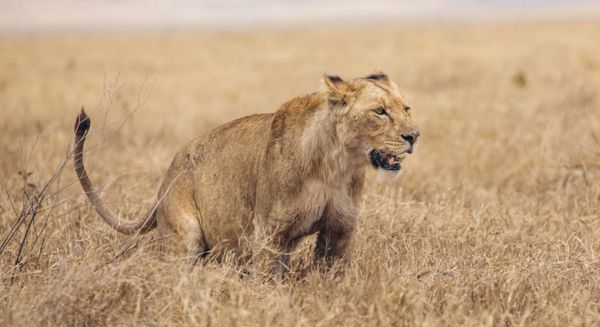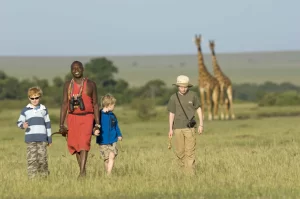 We are on top of our game
We are on top of our gameTanzania’s unit of currency is the Tanzanian Shilling, but our advice is to use US Dollars only – and in cash: credit cards and traveller’s cheques (although accepted in most establishments) incur transaction fees. ATMs are found throughout the major towns and cities in Tanzania, but not in the national parks and game reserves.
Tipping lodge staff and drivers/guides is customary for good service on a Tanzania safari, but check first to see whether a service charge has been added to your bill. Tipping is always in addition to the price quoted by your operator and the amount varies depending on the size of your group, the level of luxury of the safari and whether you thought an exceptionally good job was done. When travelling in the major Tanzania cities, a 10% tip is customary in restaurants and bars when a service charge is not included.
Long Rains | Short Rains | Long Dry | Short Dry | |
|---|---|---|---|---|
Months | April to May | November to December | June to October | January to March |
Average Temperatures | 72–81°F 22–27°C | 81–86°F 27–30°C | 70–81°F 21–27°C | 84°F 29°C |

Tanzanian culture is a delightful mix of influences with over 120 tribes. Tanzania is one of the most culturally diverse countries in the world. From the tall graceful Maasai warriors, the ancient ways of the Hadza bushmen, the resourceful agricultural practices of the Wameru, the artistic talents of the Makonde to the Chaga farmers and traders. Each of the 120 different tribes in Tanzania have their own distinct ways of life but together, they gracefully unite to form Tanzania.

22nd September each year is World Rhino Day where five rhino species: Black, White, Indian, Sumatran and Javan rhinos are celebrated globally. During this year, the main theme is “FIVE RHINO SPECIES FOREVER” – which reminds people all over the world that no rhino specie should become extinct in the near future.

Just imagine floating above the Serengeti plains skimming treetops in complete silence whilst seeing wildlife on the ground below. This is an essential safari experience for travelers to Serengeti National Park.
Although not cheap, a balloon safari is worth the expense.

The trek up Kilimanjaro is probably the most popular high altitude trek in the world. The reason for Kilimanjaro’s popularity is obvious: It is the highest mountain in the world that you can simply walk up. You need no ropes, no special climbing equipment, no previous experience.

Walking safaris are a great way to meet the magic of the bush. For people who choose this option, it is set to become an unforgettable and exhilarating experience walking among big game. There are few destinations which specialize in walking safaris.

It is an incredible opportunity to indulge in your sense of adventure and get truly off the beaten track with riding in some of the most untouched parts of the wild.

The trek up Kilimanjaro is probably the most popular high altitude trek in the world. The reason for Kilimanjaro’s popularity is obvious: It is the highest mountain in the world that you can simply walk up. You need no ropes, no special climbing equipment, no previous experience.

Enjoy hot meals in the middle of the wilderness in world-renown National Park,the Serengeti. Visitors to this scenic and wildlife rich park have among others an opportunity to get their meal in the bush!

Game viewing by vehicles is the major tourism activity in Serengeti National Park. With well-developed and carefully selected network of roads and circuits visitors has best opportunity to see wild animals with ease.

One of the unique opportunities of Lake Manyara National Park is the being able to walk on canopies of underground water forest that is found in the park. Being there on the canopy gives the visitors an opportunity to have a bird eye view of wildlife below!

Synonymous with safari, the Serengeti is where to go in Tanzania for game viewing at its most dramatic. Hosting the lion’s share of the Wildebeest Migration (from about January to September), the Serengeti’s sheer size, accessibility, top-quality lodges and camps, and year-round abundance of wildlife make it one of the best safari destinations in Africa. It’s also a regular stop on the best Tanzania safari tours.

Take about 30,000 animals and place them inside the crater of an extinct volcano. Add wetlands, forest, grasslands and some out-of-this-world cliff-top accommodation, and the result is the Ngorongoro Crater. This superb Tanzania safari destination offers excellent game viewing in an unbelievably unique setting. It’s renowned for delivering the easiest and most reliable Big 5 sightings in East Africa, and is provides what is arguably the best safari in Tanzania.

Close to Lake Manyara and the Ngorongoro Crater, Tarangire is worth much more than the usual day visit. During the June to October dry season, animal – especially elephant – concentrations along the Tarangire River are among the highest in the country. The park’s bird count of more than 500 species means that a visit here is one of the most rewarding Tanzania safaris for twitchers, while its full range of large predators complete the appeal. Tarangire is a beautifully diverse wilderness featuring riverine forest, huge swamps and open woodlands that include Africa’s iconic baobab trees.

Part of Tanzania’s famed Northern Safari Circuit, Lake Manyara offers easy game viewing in a beautiful setting. The park is home to a good range of heavyweight species, including buffalo, hippo, giraffe, elephant, leopard, and its famous tree-climbing lions. Lake Manyara is an exceptional bird-watching destination. You’ll often see flocks of pelicans and flamingos in the middle of the lake, and the floodplains, woodlands and evergreen forests are equally vibrant.

Crown your East Africa safari experience with a stay on Tanzania’s Spice Island: Zanzibar. Perfect for both families and honeymooners, it’s where to go in Tanzania for glorious beaches and coral reefs, dhow (traditional boat) trips at sunset, and exploring fragrant back-street markets. Tanzania’s other Indian Ocean islands won’t disappoint either. Pemba, Mafia and Chole are superlative beach holiday destinations with superb diving, exclusive boutique accommodation and all the indulgent pampering you could wish for.

Whether you’re content with standing in its mighty shadow or yearn to climb to its icy summit, the iconic Mount Kilimanjaro won’t fail to stir your soul. At 5 895 metres (19 340 feet), it’s Africa’s highest mountain and the tallest free-standing mountain on Earth. But its snow-capped peaks are far more accessible than you may think. If you climb Kili in the dry season between July and October or January and March, no technical climbing is required. But organising and executing a hike to the summit does call for a fair amount of logistical planning. Talk to us about a Kili expedition.

The undisputed safari capital of Tanzania, the city of Arusha is on the itinerary of virtually anyone visiting the Serengeti, Ngorongoro Crater and Lake Manyara, as logistics often dictate an overnight layover in or around the city. Set in the shadow of Mount Meru, Arusha has its own international airport (Kilimanjaro International Airport) as well as the smaller Arusha Airport for charter flights to final destinations. If you spend some time in Arusha, you’ll have many opportunities to buy souvenirs, take in the cultural activities and visit local places of interest.

Most visitors to Dar es Salaam are on their way to Zanzibar or the Indian Ocean coast, but this thriving city provides easy access to Tanzania’s lesser-known reserves such as Selous. High-quality accommodation is available if you need to overnight.
Unforgettable Adventures will be at your service every moment of the day, please feel free to contact us if you have any questions. Just send us an email or contact us through WhatsApp and/or Facetime.